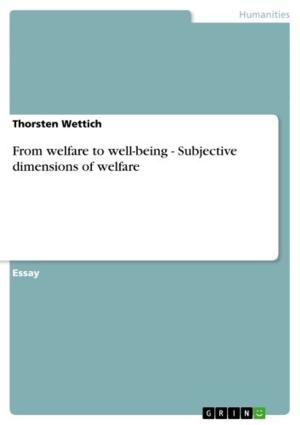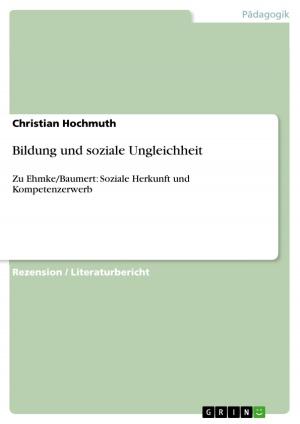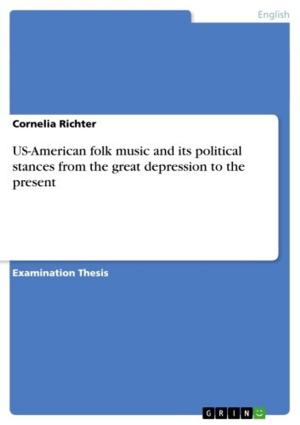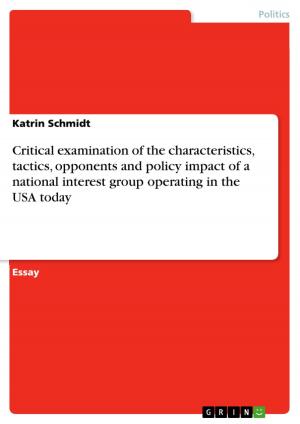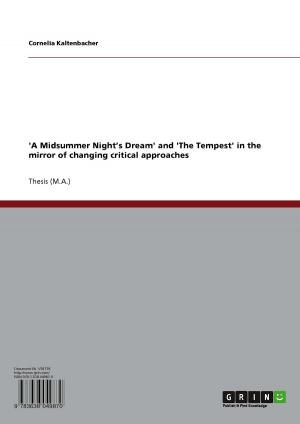Gottfried von Strassburg: Tristan - The Prologue or In Search of Gottfried's werlt of the edele herze
Fiction & Literature, Literary Theory & Criticism, European, German| Author: | Martin Stepanek | ISBN: | 9783638162715 |
| Publisher: | GRIN Publishing | Publication: | January 9, 2003 |
| Imprint: | GRIN Publishing | Language: | English |
| Author: | Martin Stepanek |
| ISBN: | 9783638162715 |
| Publisher: | GRIN Publishing |
| Publication: | January 9, 2003 |
| Imprint: | GRIN Publishing |
| Language: | English |
Essay from the year 1999 in the subject German Studies - Older German Literature, Medieval Studies, grade: very good, University of Nottingham (German Department), 9 entries in the bibliography, language: English, abstract: Despite two centuries of intensive literary research on Gottfried's `Tristan', the poem has remained one of the most discussed and controversial works of medieval literature. The poem has seen many researchers struggle with interpretations and many of the questions researchers came up with in the past proved to be hardly answerable. Especially the prologue to Tristan has remained very difficult to decipher. What was Gottfried trying to convey, when he addressed his poem to the world of the `edelen herzen' only? What was Gottfried's idea of an ideal life? And finally, in what way does the conception of his poem coincide with Aristotle's idea of catharsis? A closer look at the second part of the prologue (vv 45-244) and the literary discourse about it will hopefully throw some light on these questions, or, at least, provide the reader with some useful ideas about Gottfried's famous love poem. Indeed, to split the prologue into two parts, which (unfortunately?) was to be the starting point of my essay, is a very delicate matter. Considering formal aspects of the text, it seems justifiable to split the prologue into two parts as follows: a part one which consists of the first 44 lines written in four-line rhyming stanzas, and a part two which introduces a new pattern of rhymed couplets, beginning line 45. This way of splitting up the prologue has been the preferred one in the past, though some critics now regard it as out-dated and not very helpful. Dietz1 believes that the prologue has to be seen as a whole and therefore tends to prefer Schöne's2 suggestion to divide the prologue according to certain keywords, or, as he puts it `Hauptthemen', which seem to represent the central idea of each of his suggested parts. The `Hauptthemen' Schöne names are `guot' (vv 1-40), `werlt' (vv 41-76), `muoze' (vv 77-96), `sene' (vv 97-130), `liebe' (vv 174-221) and `leben' and `tot' (vv 222-244). Schöne chooses these key words according to their frequency of occurrence in the text. In all cases the stated keyword is the word which appears most frequently in the respective part and therefore depicts the central idea of it. Schöne's analysis of the prologue based on his suggested `Hauptthemen' is an interesting approach to do justice to the complexity of the prologue. In some respect, however, his choice of the different `Hauptthemen' may be questionable.
Essay from the year 1999 in the subject German Studies - Older German Literature, Medieval Studies, grade: very good, University of Nottingham (German Department), 9 entries in the bibliography, language: English, abstract: Despite two centuries of intensive literary research on Gottfried's `Tristan', the poem has remained one of the most discussed and controversial works of medieval literature. The poem has seen many researchers struggle with interpretations and many of the questions researchers came up with in the past proved to be hardly answerable. Especially the prologue to Tristan has remained very difficult to decipher. What was Gottfried trying to convey, when he addressed his poem to the world of the `edelen herzen' only? What was Gottfried's idea of an ideal life? And finally, in what way does the conception of his poem coincide with Aristotle's idea of catharsis? A closer look at the second part of the prologue (vv 45-244) and the literary discourse about it will hopefully throw some light on these questions, or, at least, provide the reader with some useful ideas about Gottfried's famous love poem. Indeed, to split the prologue into two parts, which (unfortunately?) was to be the starting point of my essay, is a very delicate matter. Considering formal aspects of the text, it seems justifiable to split the prologue into two parts as follows: a part one which consists of the first 44 lines written in four-line rhyming stanzas, and a part two which introduces a new pattern of rhymed couplets, beginning line 45. This way of splitting up the prologue has been the preferred one in the past, though some critics now regard it as out-dated and not very helpful. Dietz1 believes that the prologue has to be seen as a whole and therefore tends to prefer Schöne's2 suggestion to divide the prologue according to certain keywords, or, as he puts it `Hauptthemen', which seem to represent the central idea of each of his suggested parts. The `Hauptthemen' Schöne names are `guot' (vv 1-40), `werlt' (vv 41-76), `muoze' (vv 77-96), `sene' (vv 97-130), `liebe' (vv 174-221) and `leben' and `tot' (vv 222-244). Schöne chooses these key words according to their frequency of occurrence in the text. In all cases the stated keyword is the word which appears most frequently in the respective part and therefore depicts the central idea of it. Schöne's analysis of the prologue based on his suggested `Hauptthemen' is an interesting approach to do justice to the complexity of the prologue. In some respect, however, his choice of the different `Hauptthemen' may be questionable.




